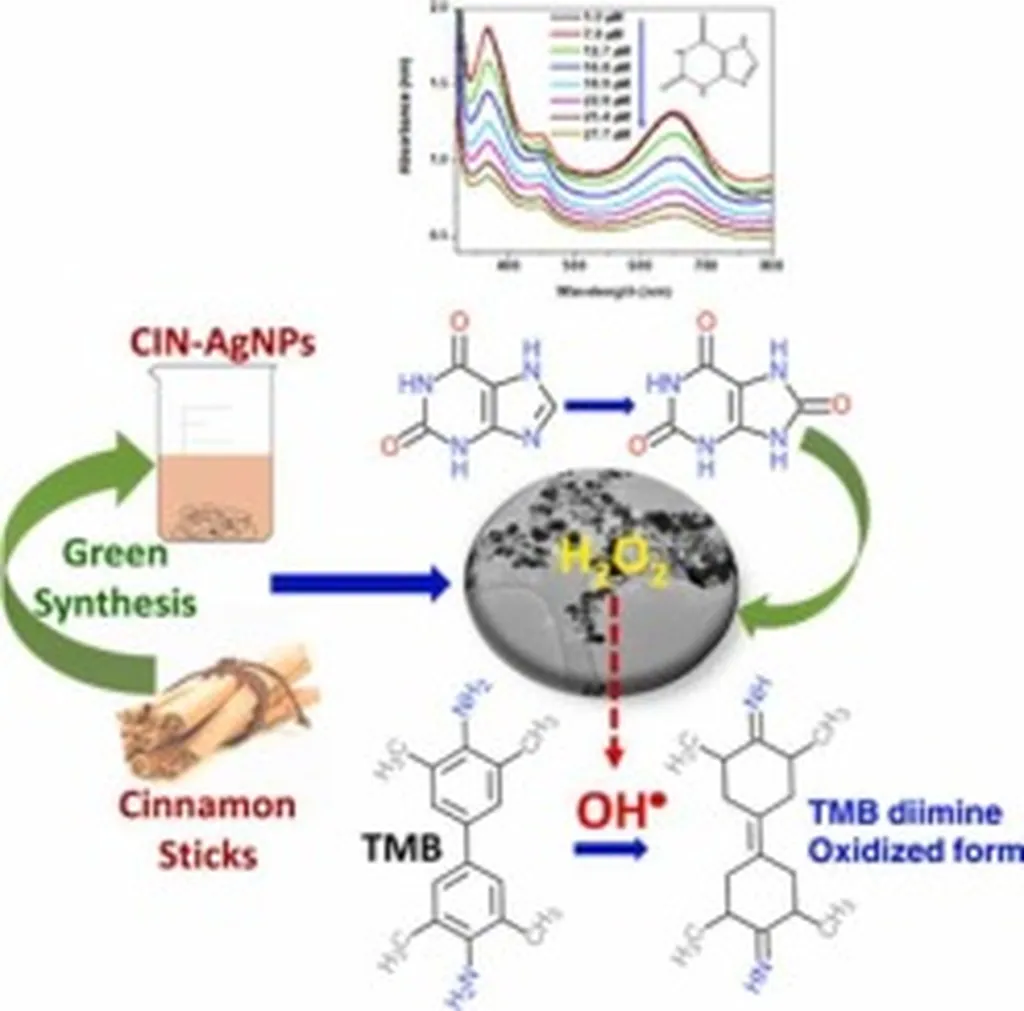In the heart of India, researchers have stumbled upon a green, sustainable method to synthesize cerium oxide nanoparticles (CeO₂ NPs) using the bark of the Cinnamomum verum tree, commonly known as true cinnamon. This innovative approach, detailed in a recent study published in the journal Discover Materials (translated from the original title in another language), opens up new avenues for the energy sector and biomedical applications, offering a glimpse into a future where eco-friendly nanomaterials could revolutionize industries.
The lead author, Samaru M., from the Department of Pharmaceutics at Yenepoya Pharmacy College & Research Centre, Yenepoya (Deemed to be University), and his team have demonstrated that these green-synthesized CeO₂ NPs exhibit remarkable physicochemical and biological properties. The nanoparticles, with an average size of just 4.18 nanometers, were found to possess both antioxidant and pro-oxidant properties, showcasing a maximum scavenging of ferric ions at an impressive 99.47%.
The implications for the energy sector are substantial. Cerium oxide nanoparticles are known for their unique catalytic properties, which can enhance the efficiency of energy conversion and storage systems. “The green synthesis of CeO₂ NPs provides a sustainable and cost-effective alternative to conventional methods,” Samaru M. explained. “This could lead to significant advancements in the development of eco-friendly energy technologies.”
The study also highlighted the nanoparticles’ potential in biomedical applications. The CeO₂ NPs exhibited significant anti-inflammatory properties, with a 70.41% inhibition of protein denaturation, and showed a notable zone of inhibition against Bacillus subtilis, indicating strong antibacterial activity. Moreover, the nanoparticles demonstrated significant cytoproliferative nature in NIH3T3 fibroblast cells, suggesting their potential in tissue regeneration and wound healing.
“This research is a testament to the power of green synthesis in creating biomaterials that are not only effective but also sustainable,” said Samaru M. “The potential applications in both the energy and biomedical sectors are vast, and we are excited to explore these further through preclinical and clinical validations.”
The study’s findings, published in Discover Materials, underscore the importance of exploring green synthesis methods for inorganic nanoparticles. As industries increasingly seek sustainable solutions, the green-synthesized CeO₂ NPs could pave the way for innovative advancements in energy technologies and biomedical applications. The research team’s work serves as a reminder that nature often holds the key to solving some of our most pressing challenges, and by harnessing the power of green synthesis, we can create a more sustainable future.
As the world grapples with the impacts of climate change and the need for sustainable energy solutions, this research offers a beacon of hope. The green-synthesized CeO₂ NPs could be a game-changer, driving innovation in the energy sector and beyond. With further research and development, these eco-friendly nanomaterials could play a pivotal role in shaping a greener, more sustainable future for all.

